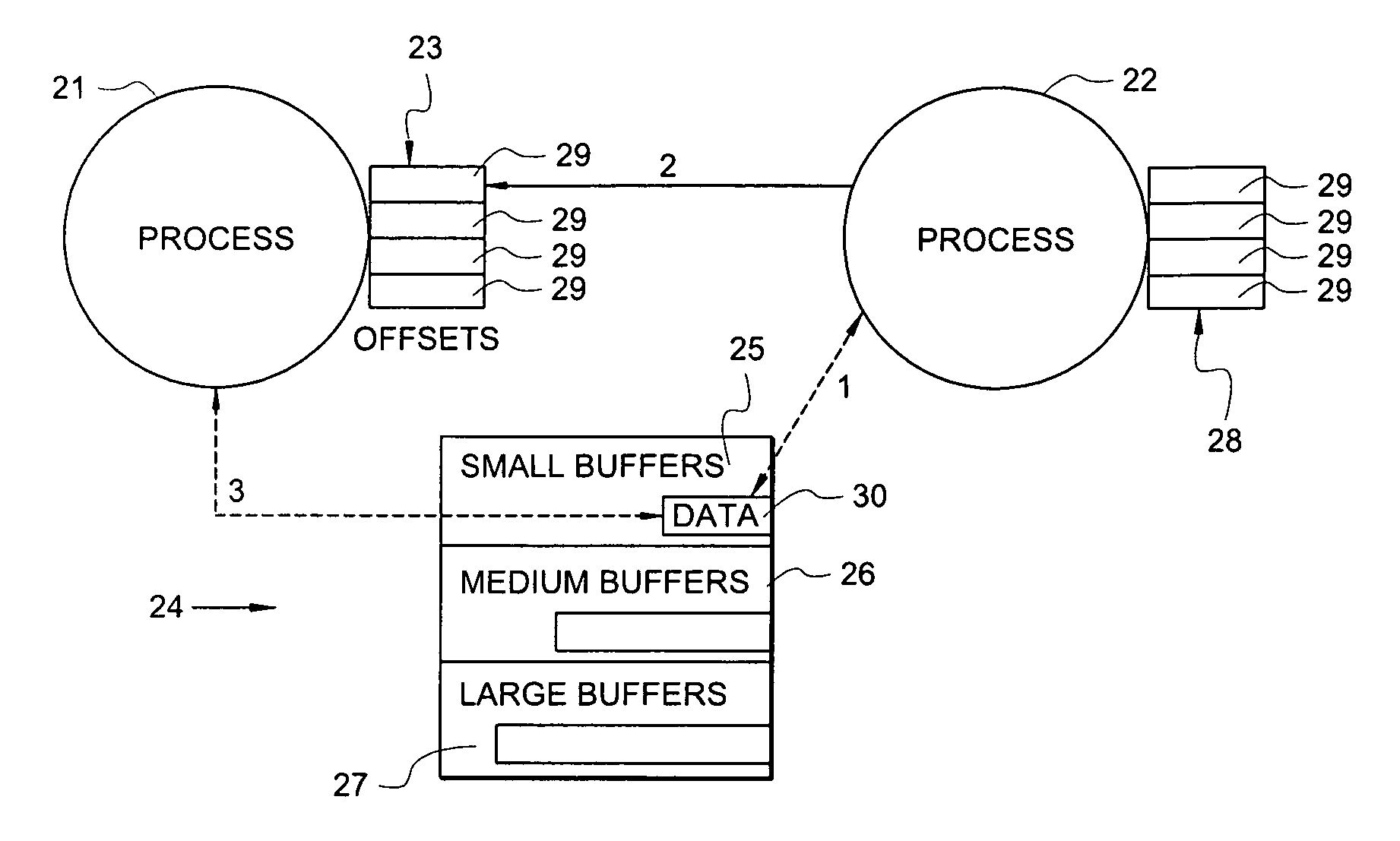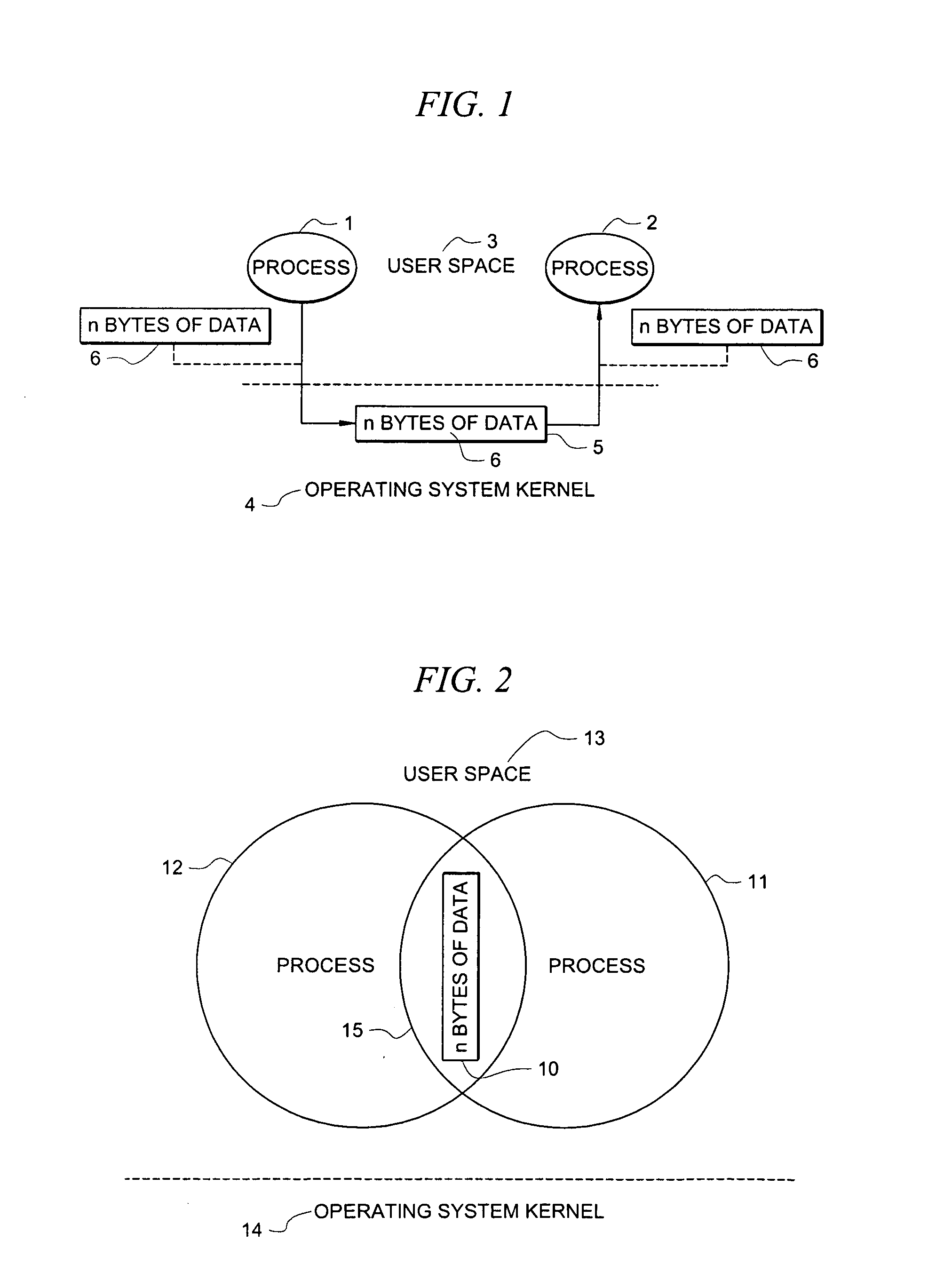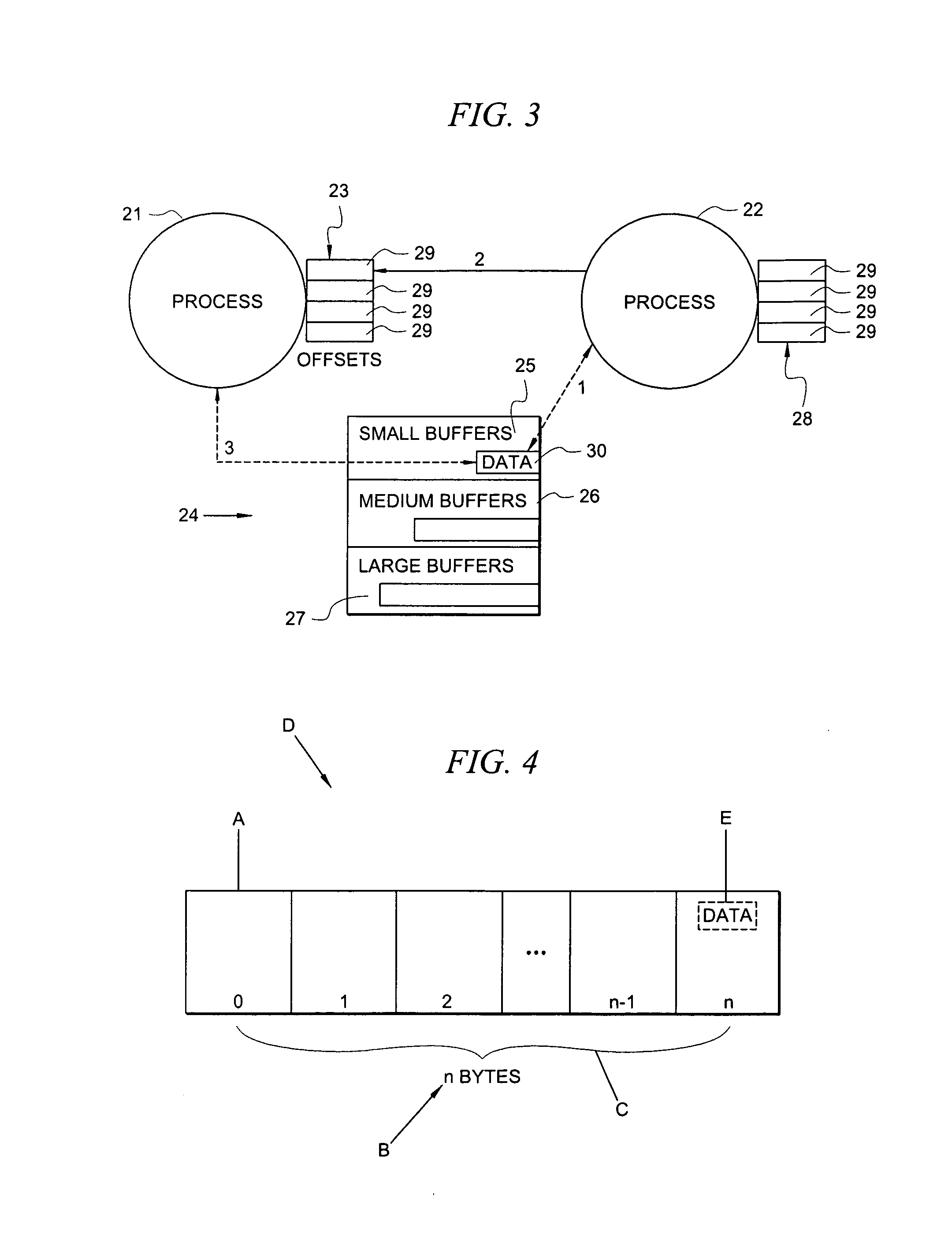High speed interprocess communication
a high-speed, inter-process communication technology, applied in the field of network inter-process communication, can solve the problems of cpu control loss, data transfer overhead, and time-consuming overhead of data transfer between processes using sockets, and achieve the effect of reducing data transfer overhead
- Summary
- Abstract
- Description
- Claims
- Application Information
AI Technical Summary
Benefits of technology
Problems solved by technology
Method used
Image
Examples
Embodiment Construction
[0025]The traditional interprocess communication (IPC) architecture includes drawbacks which preclude the use of traditional IPC mechanisms in real time command and control systems which can require fail-safe and extremely fast conveyancing of information between processes. FIG. 1 illustrates the commonality between the three traditional mechanisms for IPC. As shown in the figure, two processes 1, 2 communicate using a shared memory space 5 contained within an operating system kernel 4. In particular, process 1 can copy n bytes of data 6 from a user memory space 3 into a shared memory space 5 in the operating system kernel 4. Subsequently, using a system call, process 2 can copy the same n bytes of data 6 from the shared memory space 5 in the operating system kernel 4 into user memory space 3. Therefore, FIG. 1 shows a minimum overhead of two system calls and 2n byte copies to communicate n bytes of data between two processes.
[0026]In contrast, a method for high speed IPC can provid...
PUM
 Login to View More
Login to View More Abstract
Description
Claims
Application Information
 Login to View More
Login to View More - R&D
- Intellectual Property
- Life Sciences
- Materials
- Tech Scout
- Unparalleled Data Quality
- Higher Quality Content
- 60% Fewer Hallucinations
Browse by: Latest US Patents, China's latest patents, Technical Efficacy Thesaurus, Application Domain, Technology Topic, Popular Technical Reports.
© 2025 PatSnap. All rights reserved.Legal|Privacy policy|Modern Slavery Act Transparency Statement|Sitemap|About US| Contact US: help@patsnap.com



